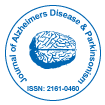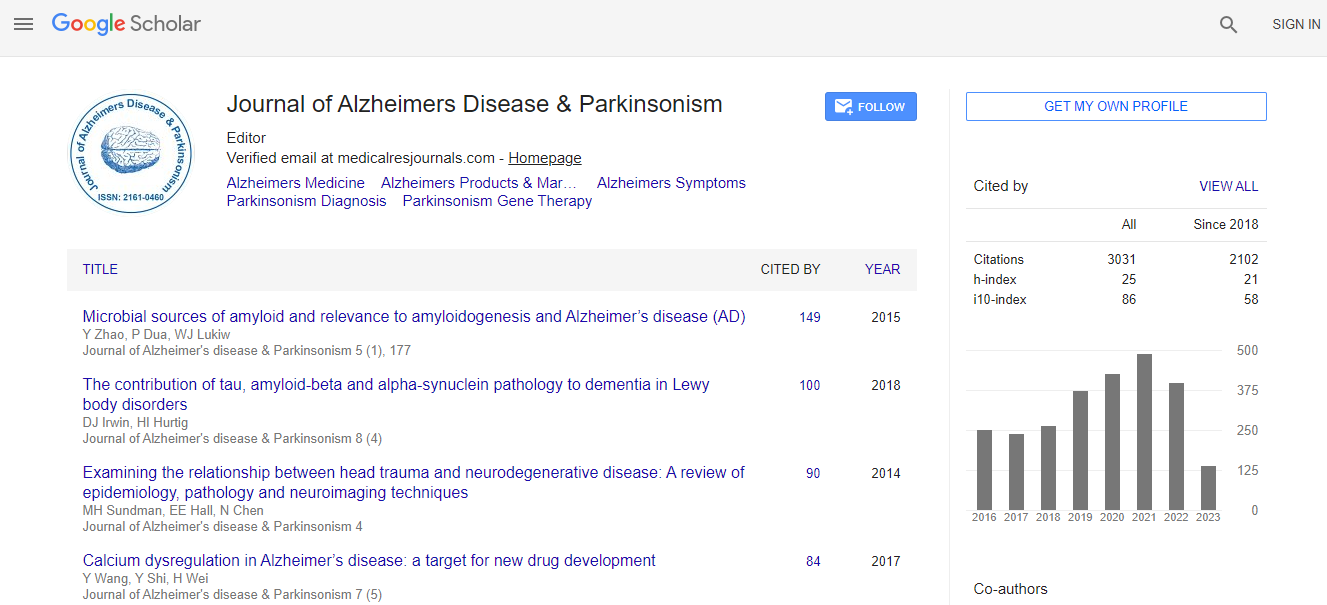Our Group organises 3000+ Global Conferenceseries Events every year across USA, Europe & Asia with support from 1000 more scientific Societies and Publishes 700+ Open Access Journals which contains over 50000 eminent personalities, reputed scientists as editorial board members.
Open Access Journals gaining more Readers and Citations
700 Journals and 15,000,000 Readers Each Journal is getting 25,000+ Readers
Google Scholar citation report
Citations : 4334
Journal of Alzheimers Disease & Parkinsonism received 4334 citations as per Google Scholar report
Journal of Alzheimers Disease & Parkinsonism peer review process verified at publons
Indexed In
- Index Copernicus
- Google Scholar
- Sherpa Romeo
- Open J Gate
- Genamics JournalSeek
- Academic Keys
- JournalTOCs
- China National Knowledge Infrastructure (CNKI)
- Electronic Journals Library
- RefSeek
- Hamdard University
- EBSCO A-Z
- OCLC- WorldCat
- SWB online catalog
- Virtual Library of Biology (vifabio)
- Publons
- Geneva Foundation for Medical Education and Research
- Euro Pub
- ICMJE
Useful Links
Recommended Journals
Related Subjects
Share This Page
Alzheimers disease: Metal toxicity and metal chelation therapy
12th International Conference on Alzheimer's Disease & Dementia
Mahmoud El Safadi
University of Technology Sydney, Australia
Posters & Accepted Abstracts: J Alzheimers Dis Parkinsonism
Abstract
Plaques are highly associated to Alzheimer’s disease, formed by the aggregation of amyloid in the brain. The aggregation of amyloid can be induced by the presence of mis- regulated metals. The interaction between mis-regulated metal and amyloid leads to generation of reactive oxygen species. In our study, molecular modelling was performed to understand the behavior of cyclen compounds with E2 domain of APP (amyloid precursor protein) in its interaction with Cu and Zn (PDB: 3UMI and 3UMK). After that cyclen compounds with pendant arms were synthesized to chelate the mis-regulated metal ions by the cyclen cage and to increase the lipophilicity and reduce the oxidative stress by the pendant arm. We synthesized Cu, Zn and Ni complexes to show the ability of our compounds to chelate AD mis-regulated metals. X-ray study was performed for some of the complexes and the effect of cyclen compounds on Aβ40 deaggregation was tested by using turbidometry, solubility of Aβ40 and mass spectrometric analysis. The antioxidant of cyclen compounds was tested by using DPPH scavenging assay. Pharmacokinetics parameters were performed to investigate the ability of cyclen compounds to arrive at its target and to see its side effect in the body. Our results show that cyclen compounds have ability for Aβ40 de-aggregation by chelation of the mis-regulated metals and may decrease the oxidative stress in the brain and can thus be considered as neuroprotective agent for treatment of Alzheimer’s disease.Biography
E-mail: mahmoud.elsafadi@student.uts.edu.au

 Spanish
Spanish  Chinese
Chinese  Russian
Russian  German
German  French
French  Japanese
Japanese  Portuguese
Portuguese  Hindi
Hindi 
